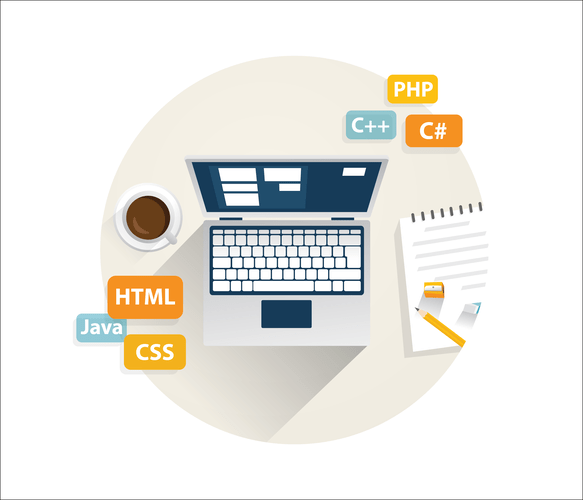A business intelligence module accumulates and inspects data from various sources and helps users define a better organization’s solution. Some notable features include scheduled reporting, visualization tools, customizable dashboards, and real-time data access. The business processes in each business function were disparate and not capable of sharing information with each other. It was difficult for the managers to assemble the data fragmented into separate systems in order to present an overall picture of the organization’s operations and take firm-wide decisions. The supply chain management (SCM) system is software that helps streamline all these processes.
A key ERP principle is the central collection of data for wide distribution. With a secure and centralized data repository, everyone in the organization can be confident that data is correct, up-to-date, and complete. Data integrity is assured for every task performed throughout the organization, from a quarterly financial statement to a single outstanding receivables report, enterprise system definition without relying on error-prone spreadsheets. First, there is an ever-increasing demand for storage due to the Internet, document management and data warehousing as well as increasing daily transaction volume in growing companies. Secondly, finding the time window in a 7×24 operation to copy huge databases for backup, archiving and disaster recovery has become more difficult.
What is Enterprise System
Although the term “financials” is often used when describing ERP software, financials and ERP are not the same thing. Systems programmers and IT managers must determine when newer versions of operating systems make sense and plan how to integrate them into existing environments. The operating system sets the standard for the programs that run under it. The choice of operating system combined with the hardware platform determines which ready-made applications can be purchased to work on it. Operating systems are the master control programs that run the computer system.

ERP systems will also provide transparency into your complete business process by tracking all aspects of production, logistics, and financials. These integrated systems act as a business’s central hub for end-to-end workflow and data, allowing a variety of departments to access. ERP systems tie together a multitude of business processes and enable the flow of data between them. By collecting an organization’s shared transactional data from multiple sources, ERP systems eliminate data duplication and provide data integrity with a single source of truth.
Centralized document repository
You can think of an enterprise resource planning system as the glue that binds together the different computer systems for a large organization. Without an ERP application, each department would have its system optimized for its specific tasks. With ERP software, each department still has its system, but all of the systems can be accessed through one application with one interface. Customer Relationship Management boils down to customer service in most scenarios. Software built for customer relations has a main goal of keeping businesses connected to customers.

You’ll identify the types of documents under management, the involved departments, and the processes requiring automation. Companies can adjust the ERP system to respond to the needs of different industries such as healthcare, retail, finance, law, architecture, hospitality, etc. Within a given sector, it is possible to customize ERP to create account payables, reports and timesheets to facilitate routine tasks in the organization.
Types of Enterprise Systems:
A robust DMS also provides security features such as access controls, encryption, and user permissions. This also helps avoid confusion caused by multiple file copies and ensures users work with the most up-to-date information. The version control feature also lets collaborators revisit all the changes they made to the document as often as needed. Robust EDM systems enable team members to work on the same document at the same time.

PCMag.com is a leading authority on technology, delivering lab-based, independent reviews of the latest products and services. Our expert industry analysis and practical solutions help you make better buying decisions and get more from technology. Small scale organizations implement the framework of enterprise system to pick up far reaching access to business learning, increase worker profitability and minimize the duplication of organization information.
What Is Enterprise Software?
These resources can instead be invested in new business opportunities, and the organization is always up-to-date on the most recent ERP software. Employees can shift their focus from managing IT to more value-added tasks such as innovation and growth. By bringing together and centralizing customer data, enterprises can deliver a personalized service experience that meets customer demands. Technologies and tools such as process automation, project management software, artificial intelligence (AI), data analytics, and machine learning (ML) make collaboration between teams easier and deliver actionable insights. Enterprise application software performs business functions such as order processing, procurement, production scheduling, customer information management, energy management, and accounting.

Data security and compliance are paramount considerations in enterprise document management. You must pick the right enterprise document management system that fits your needs, budget, and objectives. The next stage in developing your enterprise document management strategy is goal definition. You’ll identify your organization’s specific document management challenges, requirements, and goals here.
What are the types of enterprise software?
Many ERP software applications are critical to companies because they help them implement resource planning by integrating all the processes needed to run their companies with a single system. With access to these new technologies, organizations can quickly improve their business best practices as the ERP software evolves. They can automate processes that used to require heavy manual intervention, such as reconciling financial accounts.
- It delivers a standard set of collaboration tools and workflow solutions that reduce interdepartmental silos.
- Pipedrive is a CRM enhanced with rich features to improve work of marketers and business development managers.
- Most enterprise management systems come with tools for IT departments to manage all included programs in the package.
- But, even with its advanced text-generation abilities, many have criticized the machine because it can be tricked into answering nonsensical questions and therefore would struggle under the conditions of the Turing Test.
- Watch and learn how Oracle ERP Cloud delivers connected teams, unified data, and real-time insights to help you and your finance team ensure that the best business decisions are made.
An enterprise resource planning (ERP) system corporate with organizations to enhance business management and operations within a centralized database. Agencies incorporate ERP software to assimilate business processes, accumulate operational data, improve supply-chain effectiveness, stimulate data-driven strategies, and improve collaboration between compartments. ERP applications can help a corporation become more self-aware by linking information about production, finance, distribution, and human resources together. Because it connects different technologies used by each part of a business, an ERP application can eliminate costly duplicates and incompatible technology. The process often integrates accounts payable, stock control systems, order-monitoring systems, and customer databases into one system. Businesses implement Enterprise Resource Planning (ERP) to integrate procurement, finance, accounting, marketing, and human resources processes.
Disaster Recovery and Data Backup
For example, in the ServiceNow platform, business rules can be written requiring the signature of a business owner within 2 weeks of a newly completed risk assessment. The tool can be configured to automatically email notifications to the business owner, and transition the risk assessment to various stages in the process depending on the owner’s responses or lack thereof. Enterprise appliance transaction modules (EATM)—These devices communicate directly with plant floor equipment and with the ERP system via methods supported by the ERP system. EATM can employ a staging table, web services, or system–specific program interfaces (APIs). Direct integration—ERP systems have connectivity (communications to plant floor equipment) as part of their product offering. This requires that the vendors offer specific support for the plant floor equipment their customers operate.






